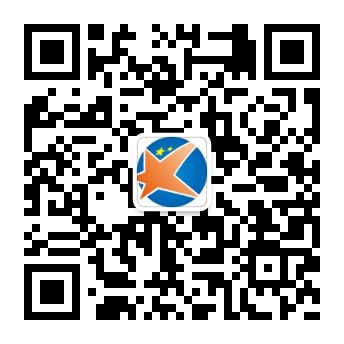初中名师视频课程免费试听1200分钟 |
||||
| 初一全科强化班辅导课程 免费听课 | 初二强化班辅导课程 免费听课 | 初三强化班辅导课程 免费听课 | ||
七年级英语Unit 1- Unit 3下册寒假预习重点
Unit 1 Can you play the guitar ?
- 重点单词
speak 说 teach(单三)teaches music(音乐家 n.)musician also 也
- 重点短语
- play chess 下棋 play the guitar 弹吉他 3. tell stories 讲故事 4.make friends 结交朋友 5. talk to 跟……说 6. help sb. with sth. 帮助某人做某事7. on the weekend= on weekends 在周末8. speak English 讲英语
- 重点句型
1.What club do you want to join? I want to join the chess club and the basketball club.
2.What club does Tom want to join? He wants to join the swimming club .
3.He can’t play the violin or the piano. Can you help kids with swimming?
4.Why do you want to join the English club? Because I want to learn English well.
四、语法知识
1.can+动词原形,它不随主语和数而变化。
(1)含有can的肯定句:主语+can+谓语动词的原形+其他。
(2)变一般疑问句时,把can提前:Can+主语+动词原形+其他?
肯定回答:Yes,主语+can。否定回答:No,主语+can't.
(3)含有can的否定句:主语+can't+动词的原形+其他。
(4)含有can的特殊疑问句:特殊疑问词+can+主语+动词原形+其他?
2.may+动词的原形。(may为情态动词)一般疑问句是把may提前,
肯定回答是:Yes,主语 +may。否定回答是:No,主语+mustn't。或please don't。
3.join+某个组织,俱乐部,party,参军,党派等 “加入”join sb. “参加到某人中”
★4、play+球、棋、牌;play+the+乐器。
★5、擅长于(做)什么:be good at +名词/动ing; 善于应付……的be good with sb
★6、帮助某人做某事:help sb. (to ) do sth. help sb. with sth.
7.be busy with sth. 忙于某事 be busy doing sth. 忙于做某事
8、想要做什么:want to do sth 例如:I want to learn about art.
- 也 also 用于句中,too用于肯定句句末 , either用于否定句或疑问句句末。
10.speak say talk tell的区别
speak+语言 say强调说的内容
talk强调相互交谈、讨论 talk to/with sb. talk about sth.
tell 告诉 tell stories 讲故事 tell sb. (not) to do sth. 告诉某人(不要)做某事
Unit 2 What time do you go to school ?
一、重点单词
brush(单三)brushes usually 通常 never 从不 early 早 exercise 锻炼 quarter 一刻钟 quickly 快地、迅速地 either 也 taste 品尝、尝起来
- 重点短语
- get dressed 穿上衣服 take a walk 散步 3. lots of 许多、大量 4.what time 什么时候 5.brush teeth 刷牙 6. either……or……要么……要么…… 7. from ……to…… 从……到……
三、重点句型
- What time do you usually go to school?
- In the evening, I either watch TV or play computer games.
四、语法知识
what time和when引导的特殊疑问句。
(1)对时间提问用what time,也可以用when。询问钟点时用what time,询问日期、月份、年份时用when。 What's the time? =What time is it?现在几点了?
时刻表达法:顺读法和逆读法。
(1)顺读法:“钟点+分钟”直接读数字。
(2)逆读法:借助介词past或to表示,要先说分再说钟点。
A.当分钟不超过30分钟时(包括30分钟),即<或=30,用past表示。
其结构为:“分钟+past+整点” 意为“几点过几分”。
B.当超过30分钟时,即>30,用to表示。其结构为:“所差分钟(即60—所
过分钟数)+to+下一个整点”,to译成“差”,差几分钟到几点。
C.当分钟为30分钟用half表示,当分钟为15分钟用a quarter。
always 总是>usually 通常>often常常>sometime 有时 副词位于实意动词之前
watch+TV、球赛 “观看,观赏”,特指长时间注视。on TV
see+电影、医生 “看见”,强调看的结果。
look “看”,强调看的动作,look后接宾语时要用介词at。
read+书刊、杂志 “阅读”
listen to +宾语
Go to +地点名词 如:go to school go+地点副词 如:go home
- either……or……要么……要么…… 连接两个名词作主语时,谓语遵循就近原则。
- taste 意为尝起来时,是系动词,后跟形容词做表语。
Unit 3 How do you get to school?
一、重点单词
hundred 百 forty 四十 fifty 五十 minute 分钟 drive 开车 afraid 害怕 dream梦想 between 在两者之间
二、重点短语
1.get to school 到校 2.take the subway 乘地铁
4.leave for 到……地方去,离开去某地 5.take…to…把……带到… 6. come true 实现7.think of 想到,想起8. hundreds of 数以百计的9. be different from和……不同 10.ride a bike= by bike 骑自行车11. how far 多远 (路程、距离) 12.how long多长(时间)
三、重点句型
1.-How do you get to school? - I ride my bike. = I get to school by bike.
- I walk to school. = I get to school on foot.(对交通方式提问用how)
- - How longdoes it take to get to school?
- It takes about 15 minutes. (对一段时间提问用How long)
- -How far is it from your home to school?
- It’s about two kilometers. / It’s about 15 minutes’ walk. (对距离提问用how far)
四、语法知识
1.take +a/an/the+表示交通工具的名词,乘……去某地,是动词短语,在句中作谓语。
He takes the train. take the subway乘地铁 take a walk散步 take a shower洗个澡
take a rest休息一会 take a seat 坐下 take some medicine 吃药
2.by+交通工具的单数名词或on/in+ a/an/the/one’s+交通工具的单数名词,是介词短语作方式状语。
I get to school by bike. = I get to school on my bike.
3.walk/ride/drive/fly+to+地点名词,步行/骑自行车/开车/坐飞机去某地
表示乘交通工具方式可以互换表达相同的意义:
Take the bus to school=go to school by bus=go to school on a bus
Drive a car to work=go to work by car=go to work in a car
Fly to shanghai=go to shanghai by plane/air=take the/a plane to shanghai=go to shanghai on a/an/the plane.
4.get表示“到达”,后接名词需加to,接地点副词不加to.
reach 给示到达,是及物动词,其后直接接宾语。
arrive in+大地点 arrive at +小地点后接副词不需介词。
- It takes sb some money/time to do sth.花费某人多少时间/钱做某事
Sb pay some money for sth 某人为某物花费多少钱
Sb spend some time/money on sth 某人在做某事或某物上花费时间/钱Sb spend some time/ money (in)doing sth Sth cost sb some money 某物花费某人多少钱
- How far is it from A to B?=How far is B from A?
答语有两种: It’s…meters/miles/kilometers(away)有……米/英里/千米(远)
It ‘s about ten minutes’ walk/ ride. 大约有十分钟步行/骑车的路程。
7.Hundred前有具体数字时不加s,与of连用表达不确切数字时加s。
- an 8-year-old boy 一个十一岁的男孩 复合形容词中间的名词用单数形式。
- Stop to do sth. 停下来去做某事 stop doing sth. 停止做某事
10.感谢用语:Thank you very much , Thanks a lot , Many thanks.
回答感谢用语的句子:That’s OK/all right. 不用谢。You are welcome 不客气。 It is my pleasure./My pleasure./It is a pleasure.不客气、那是我的荣幸。/Don’t mention it。别在意。 It was nothing at all.那没什么。
